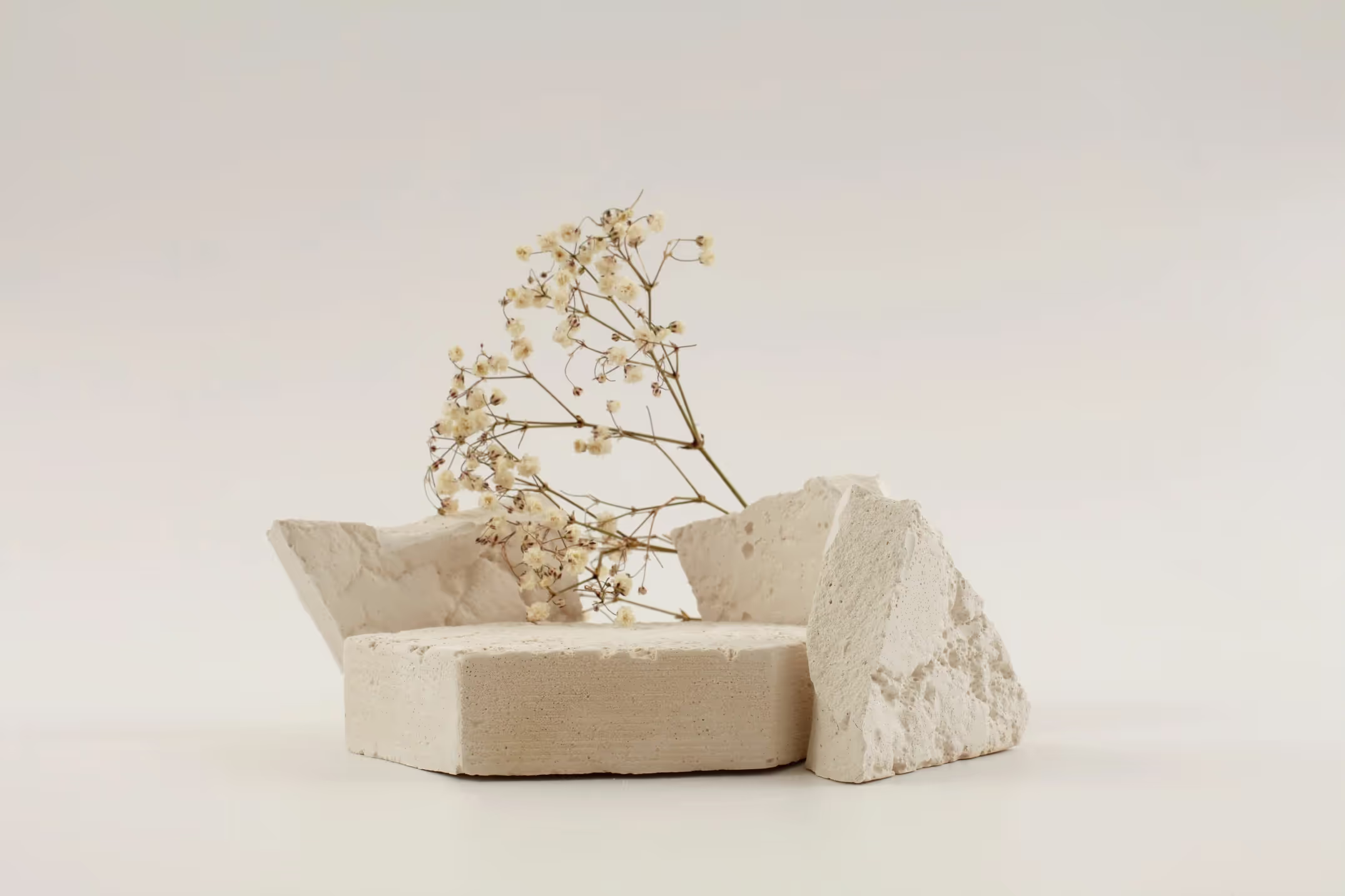- Stone Center
- Blog
How to Choose the Best Stone for Your Fireplace
6/8/2024
1/16/2024
How to Choose the Best Stone for Your Fireplace
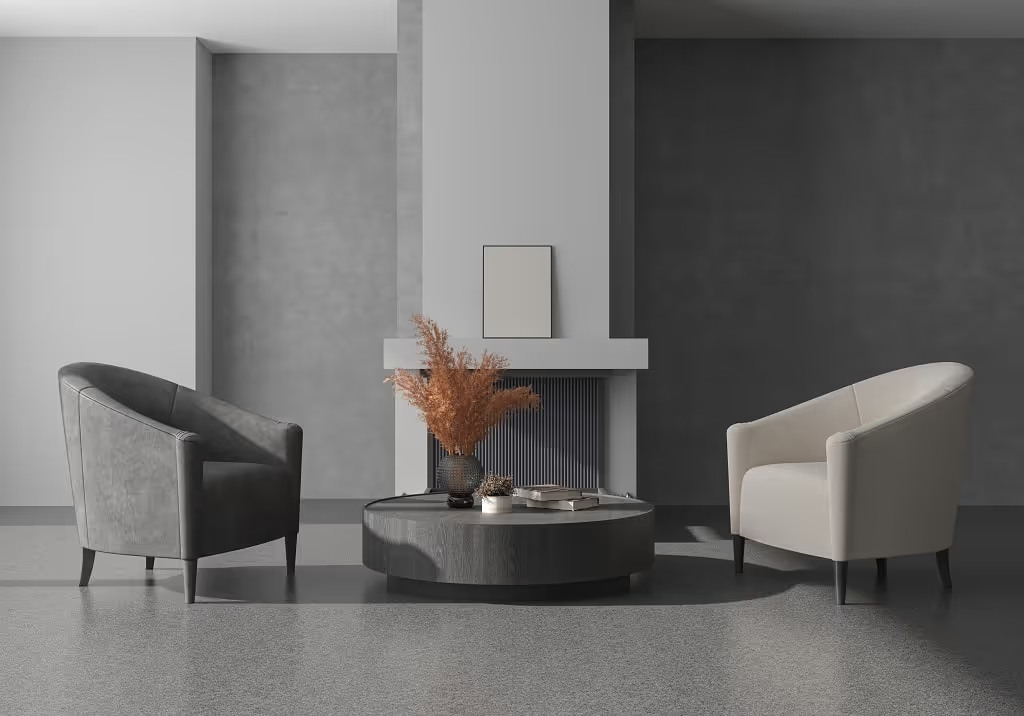
A natural stone fireplace exudes an enjoyable atmosphere and offers a distinct look and design aesthetic. Not only does it have a rustic feel, but it also retains heat within the firebox for longer, keeping the cold out during the winter months. With proper installation, natural stone requires minimal maintenance and can increase a home's value. From marble to quartzite, limestone, and more, here's how to select a suitable natural stone for the fireplace surround to achieve the overall look you desire.
Types of Natural Stone for Fireplaces
When it comes to choosing the best stone for your fireplace hearth, there are many options available:
Affordable Limestone Fireplace
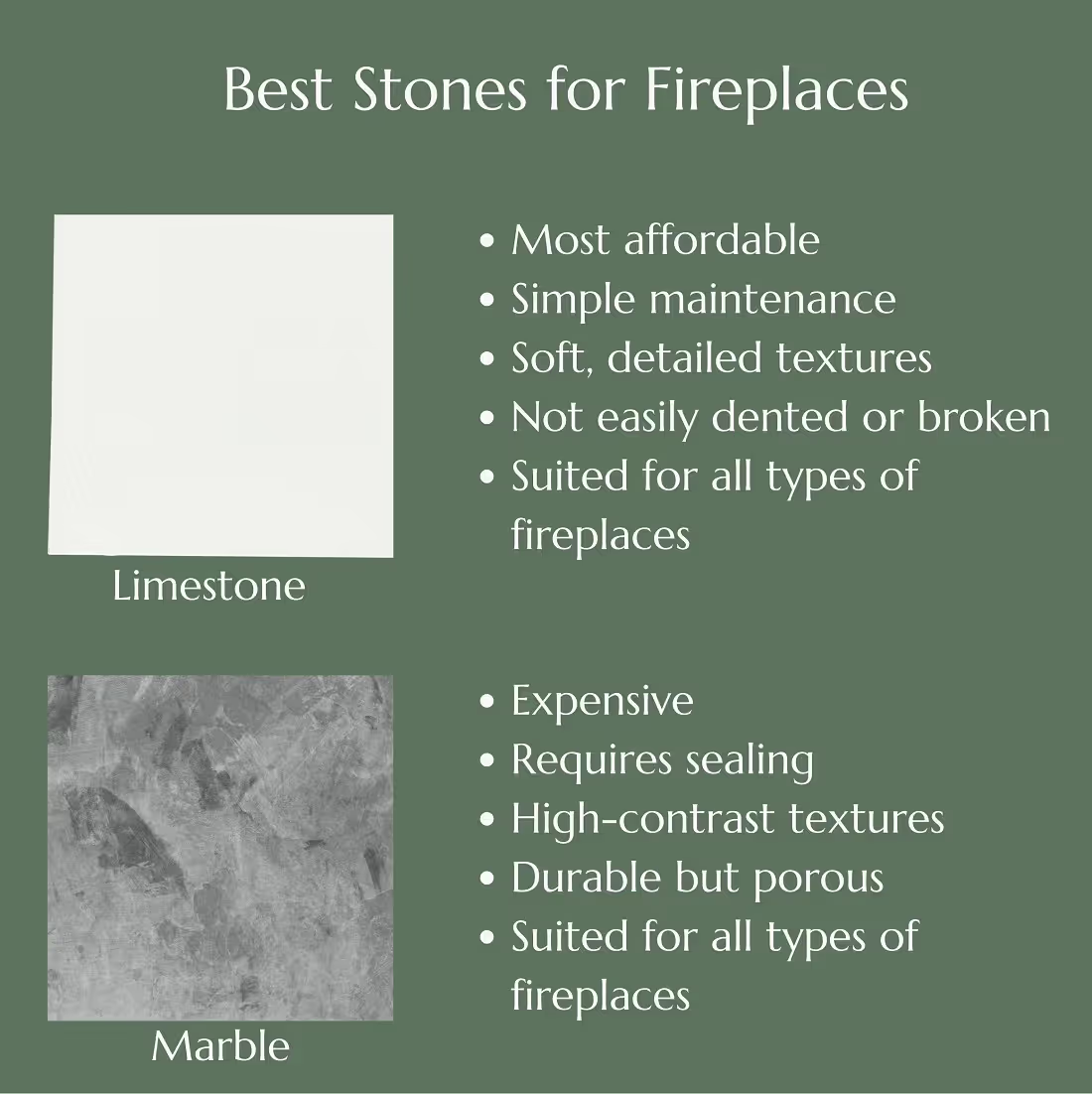
The abundance of Indiana limestone compared to imported granite and marble makes it one of the most affordable fireplace surround stones. Limestone is a softer stone, so carvings, embellishments, and small details are easier to see. This attractive quality allows engravers to add detailed textures and patterns on facing, surrounds, and mantelpieces.
From a practical standpoint, it doesn't get dented, scratched, or easily broken. It's also simple to maintain and only requires mild cleaning agents and warm water. Like other natural stones, limestone slabs are available in various hues ranging from light to dark tones, each of which exudes a different feel.
Cut limestone veneer complements a rustic, ornamental, and modern interior and exterior design, blending well with any style of furniture. Limestone has timeless appeal, offering a distinguished appearance that's an excellent choice for most interior styles. It can reflect ornate beauty or sleek, minimalist appeal.
Natural Stone Veneers for Your Fireplace Surround
Stone veneer is a thin layer of manufactured or real stone that's not load-bearing and is used instead as decorative stone cladding. Flexible and easy to install around rounded or curved areas, it’s widely considered the best stone for fireplace surround because of its cost and design flexibility often used in modern applications.
Natural stone veneers are manufactured from quarried rocks, whereas faux stone veneers are created to look like the real thing. Lightweight, non-combustible, and non-flammable, natural stone veneer is a safe choice, regardless of whether you have a gas or a wood-burning fireplace. Barring periodic cleaning, a cut limestone and stone veneer fireplace requires very little maintenance once installed.
Stone veneer is aesthetically pleasing, offering a warm, rustic look reminiscent of old-world charm. Like other natural stones, it comes in many hues and texture options. Limestone veneer is a popular choice because it offers the same durability as limestone and can withstand harsh conditions without more maintenance.
Because a cut limestone veneer is a quarried product, no two pieces are the same. This type of stone has many color variations and is rich in hue and texture, offering each fireplace a unique appearance varying from silver, gray, buff, and variegated. Affordable limestone offers exceptional appearance and lasting quality.
Stunning Marble
Chic, elegant, and sophisticated, marble is the crème de la crème of natural stone around the fireplace. Its high-contrast striations and an impressive selection of colors make it one of the most sought-after stones for those desiring an opulent and classically designed fireplace. It offers a luxuriant look reminiscent of temples, crutches, and civic buildings.
Marble can be honed or polished, offering a high-gloss or muted appearance. As a durable stone, it's compatible with wood-burning, gas, and electric fireplaces. However, while easy to maintain, due to its porous nature, it's prone to damage. This stone has to be sealed to protect against moisture and acidic damage.
Compared to other natural stones, marble tends to be the most expensive. This is mainly due to its finite nature, durability, timeless beauty, and the energy-intensive process of converting rock into slabs, not to mention import costs.
Durable Granite Fireplaces
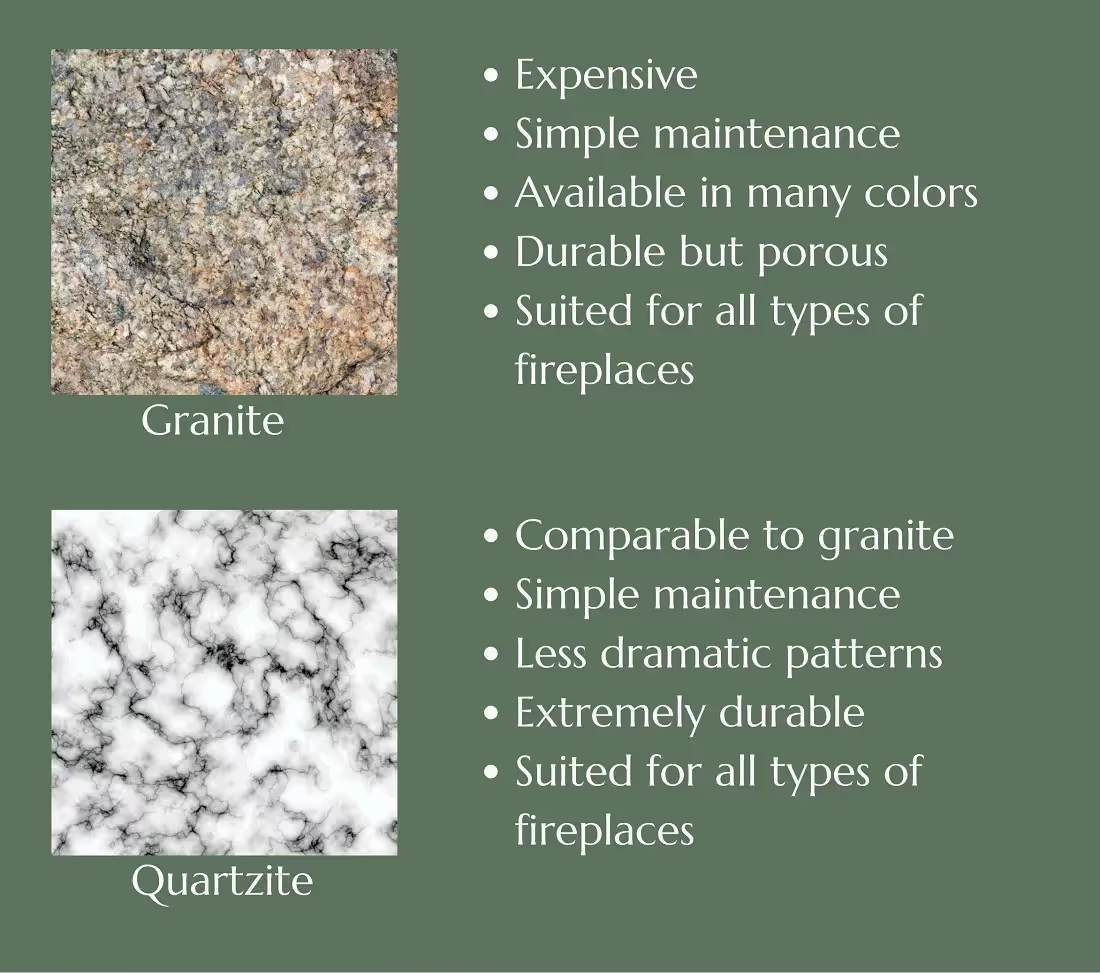
Granite is the most popular option as a fireplace surround. It's more durable than marble and can even emulate marble patterns, offering a marginally affordable alternative. Granite is a formidable stone available in an enormous variety of colors and is scratch and stain-resistant.
This type of fireplace holds up well over time and even resists smoke damage. Granite coping requires minimal maintenance and sealing every so often to preserve its natural beauty and longevity. Like marble, granite enhances a fireplace, transforming it into the focal point of a room.
Granite is suitable for gas or wood-burning fireplaces. Its natural patterning complements other elements of a room or stands in bold contrast. Although unmatched when it comes to strength, durability, and good heat tolerance, it can become discolored over prolonged periods.
Quartzite Fireplaces
Like granite, quartzite is a strong natural stone. It comes in many patterns and colors that are compatible with nearly any space in which it resides. Non-porous and resistant to scratches, scuffs, stains, dents, and burns make quartzite a desirable choice for stone fireplaces. Even though quartz looks similar to marble, it's a major plus that it doesn't require sealing.
Maintaining quartzite is incredibly simple, as water and mild detergent will keep it looking its best. Quartzite patterns are less dramatic than some marble and granite. Overall, it works well in modern homes with minimalist appeal, offering a clean, sleek, and stylish appearance.
7 Advantages of Using Natural Stone for Your Fireplace Surround
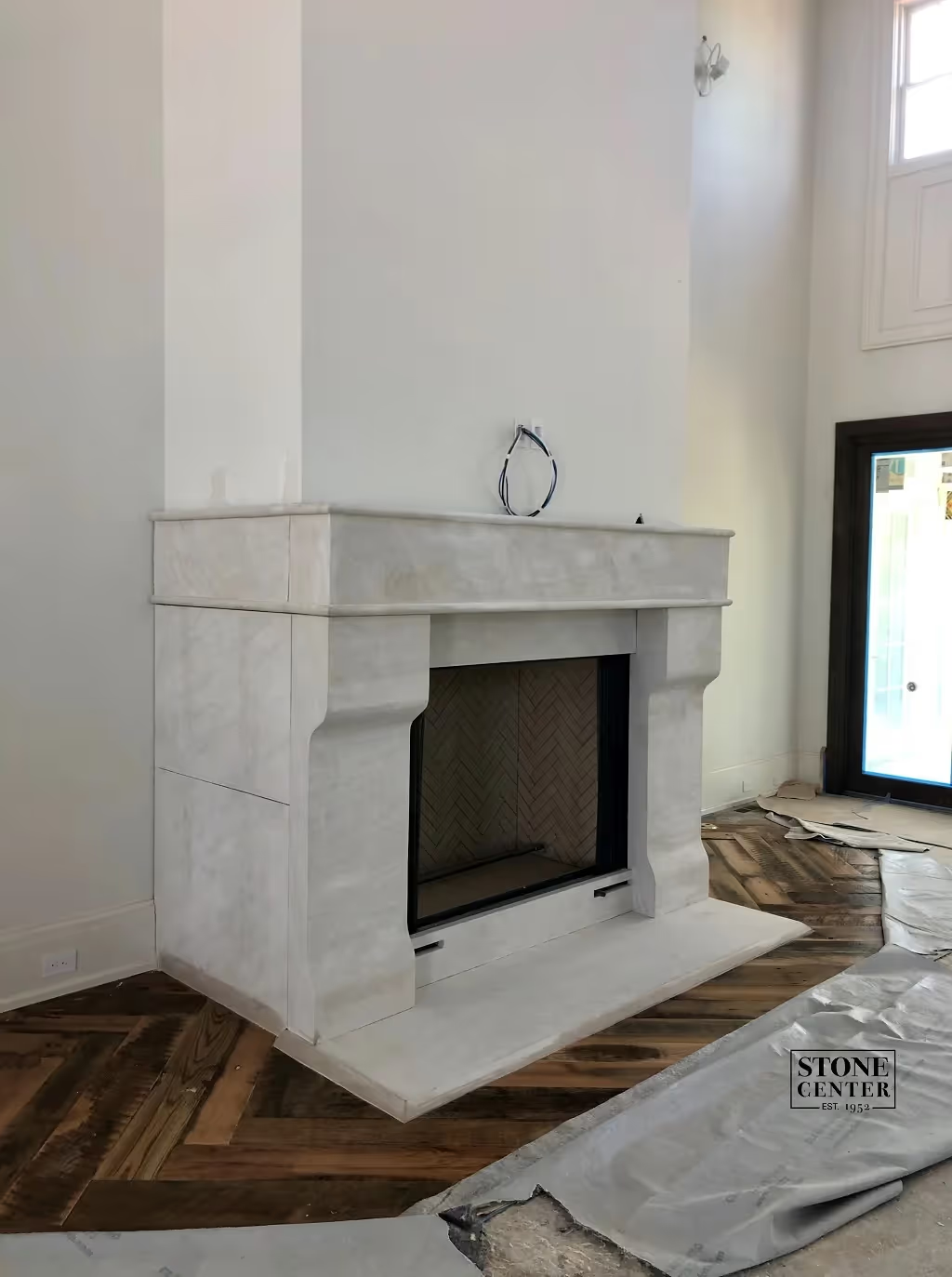
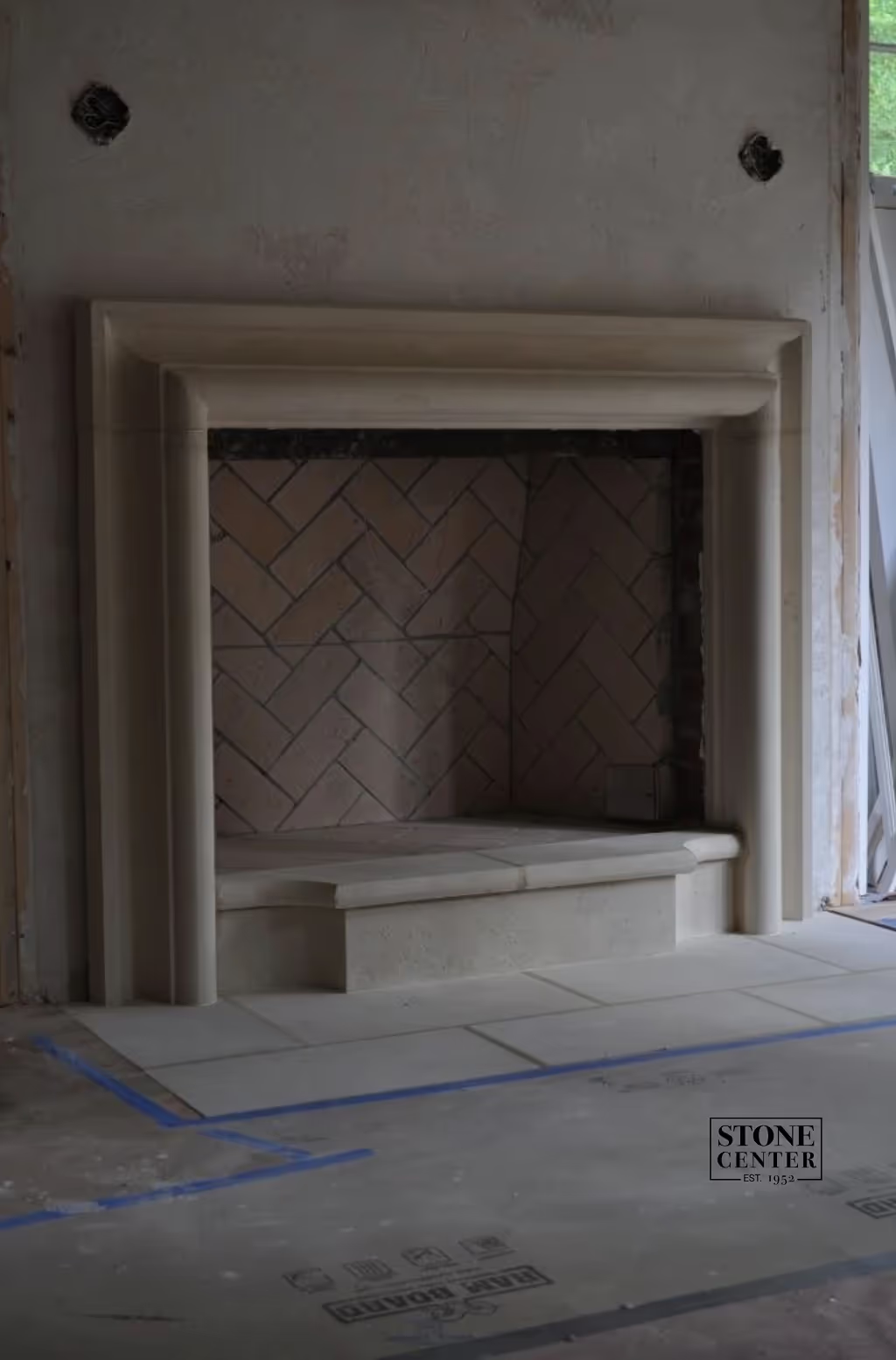
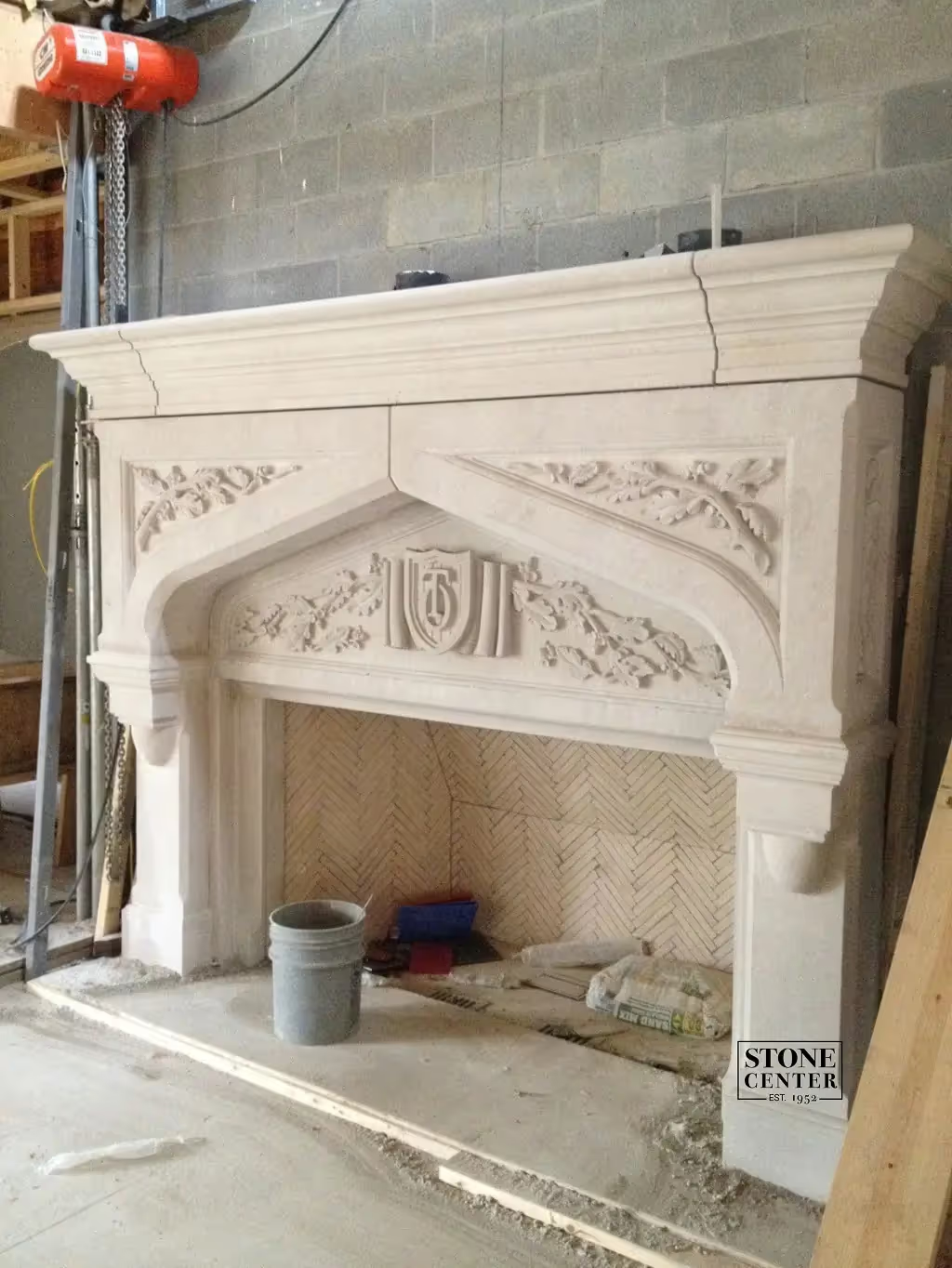
There are several benefits of using stone fireplace surround:
#1. Natural Stone Is Visually Appealing
Natural stone is visually distinct and can be elegant, like marble and granite, or rustic, like sandstone. Because it's acquired from nature, it has rich tones and hues such as light browns that are warm and welcoming. It allows for artistic design liberties and can link the interior of a home with architecture and landscaping outside if the same stone is used.
From stacked stone to simple slabs, soft, neutral, and earthy stone surrounds are all the rage. These tones blend in excellently with current minimalist and maximalist decor trends, adding depth and interest - the organic shapes and textures of stone work well with wooden and other ornate stone accents.
#2. Stone Fireplace Surrounds Can Be Customized
Marble, limestone, granite, and travertine are popular types of stone for fireplaces. As stone slabs, they can be fabricated to fit any size shape, so it's truly possible to create a 100% unique fireplace for your home.
While brick and tile fireplaces retain their charm, every piece of marble, slate, and granite is unique and can't be replicated. Whether simple or ornate, timeless or modern, you can achieve any look with fabricated or natural stone veneers, and these fireplaces add a unique touch to any space.
#3. Natural Stone Is Extremely Durable

Stone fireplace materials comfortably absorb and radiate heat without damage. Marble, limestone, and granite are excellent heat conductors and retain warmth in the firebox for longer. One of the benefits of a fireplace made from natural stone is its innately durable and scratch-resistant surface that withstands everyday use.
Of all the natural stone options, granite is the most popular. It's scratch-resistant, is unlikely to chip, crack, or exhibit etching marks after time, and maintenance is minimal. Depending on the type, it may need sealing every six months to a year. Otherwise, dust and wash with water and a mild detergent will suffice.
#4. You'll Ensure the Longevity of Your Fireplace
Traditional fireplaces made from hearths and bricks wear and tear, forming cracks and chips. On the contrary, a timeless fireplace surround can last well over 100 years without losing luster. And it's not just about materiality. Natural stone maintains the aesthetic of heritage homes and buildings, too.
Indiana limestone products offer a warm, soft, and natural look that's elegantly understated and pairs well with wood furniture. Limestone comes in shades of beige, tan, and yellow-gold and is processed with a tumbled or antiqued texture.
#5. Natural Stone Requires Low Maintenance
A fireplace in stone merely requires dusting and light polishing (in the case of smooth slab finishes) to maintain allure and prevent soot caking into the stone. If an area becomes discolored, it's best to hire a professional stone cleaning service to restore it, as some stones in fireplaces are sensitive to harsh cleaning products.
Minor stains can be wiped away with a damp cloth or sponge, although it's best to inquire which cleaning method is best with your fabricator or supplier. Like marble and granite, some stones may require sealing every few years.
#6. Natural Stone Is Eco-Friendly

There are no harmful chemicals or toxins in natural stone, and because it's quarried from the earth, its carbon footprint is significantly less than other manufactured materials. Regionally manufactured and extracted stone-like Indiana limestone further decreases environmental harm as supply chain logistics require fewer resources.
Stone can easily be recycled and repurposed, lengthening its lifespan and reducing waste in landfills. Its long shelf-life also means that it doesn't need replacing often. In many ways, the stone is one of the first eco-friendly building materials we continue to use to this day.
#7. Increase Your Home's Value
Real estate agents and architects agree that natural stone increases a home's value and delivers a high return on investment when homeowners decide to sell. While many assume stone is out of their budget, know that it's still possible to find reasonably priced slabs that are well worth the cost and within your budget.
Natural stone can potentially increase a home's value by up to 25% of its retail value when paired with stone countertops, floors, bathrooms, or outdoor areas. Due to its longevity and low chances of replacement during ownership, it's a once-in-a-lifetime investment.
Things to Consider When Choosing Stone for Your Space

We always advise conducting research before settling on a stone. Certain types have a beautiful aesthetic but require higher maintenance, and others may have the perfect look but be way out of budget. Interior design, durability, maintenance, and cost should be considered before you settle on a stone.
What's Your Budget?
Natural stone options are endless, but they come with a price tag. Deciding on your budget will automatically give you a price range to work within. Remember that stones like marble and granite may need to be specially fabricated to fit custom fireplaces. They're incredibly heavy and may also require professional installation, which incurs additional costs.
What Is the Final Design of Your Fireplace?
Cut limestone and a slab of marble with bold veins embody contrasting styles. Having an idea of your interior design will also narrow down stone options. If you're after a dramatic, high-contrast look, you may select marble, but if you're after a more rustic look with something neutral-toned with decorative detail, you may prefer limestone.
What Durability Is Required?
All-natural stone is durable, but granite and marble have greater porosity than quartzite and limestone, meaning they must be sealed and require preventative maintenance. Additionally, outside fireplaces require extra durability and shouldn't be constructed of stone such as granite that's prone to fading under UV light.
How Hard Will It Be to Maintain?
Most stones can be cleaned with a mild detergent and water, but that's not usually the issue. Marble, for example, is prone to etching and stains, so glasses shouldn't be left on the mantelpiece without coasters. Like Limestone, it also needs to be sealed. This, of course, isn't a big deal, but something to consider.
Still Can't Make a Choice?
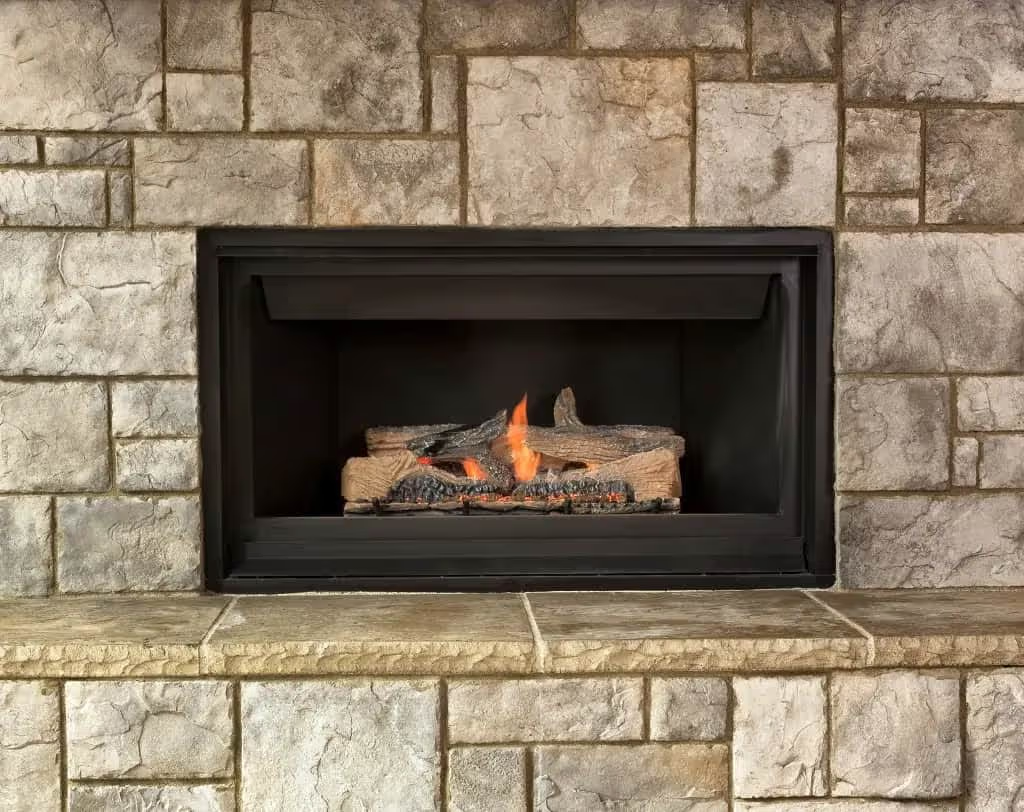
As we've discussed, a well-maintained and properly installed natural stone fireplace can last a lifetime. Of course, there are pros and cons to each type, but usually, the choice comes down to your aesthetic goals and budgetary constraints.
Still, we know that deciding on a natural stone for the fireplace can be overwhelming. If you're struggling to choose which best suits your needs, Stone Center is here to help. As a leading stone-cutting company, you can count on us for expert advice every step of the way. We work with homeowners and design professionals to supply the most suitable stone for our clients' fireplaces. Call us at 614-276-3585 or click here to speak to one of our experts.
FAQ
.avif)
Jon, the owner of Stone Center, is a knowledgeable expert in natural stone products, specializing in various types of stone for landscaping and architectural projects. Passionate about promoting the beauty and versatility of natural stone, Jon aims to use these blogs to inspire readers with creative ideas to upgrade their homes.
How much does it cost to get a stone restored?
How much you end up spending to restore stone varies on the type of stone, the technique, and the stone’s current condition. Stone in good condition will cost less to restore, whereas stone that has a lot of wear and tear may require a longer restoration.




